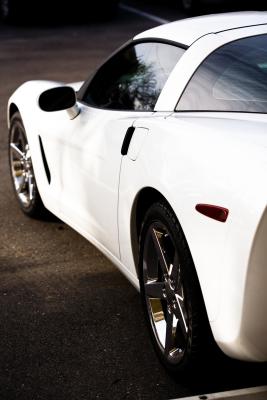
Like so many other "modern" automotive innovations, traction control and anti-slip differentials aren't new: They're just better and faster than they used to be. Traction and stability control were once the sole domain of the super-rich with their super-cars, but nowadays they cost no more to include than the time it takes to write a computer program. So this debate is a valid one, and it's getting hotter by the minute.
Most vehicles use an "open" differential, or a geared unit that sends engine power through the path of least resistance. This works fine for most driving situations but creates a serious problem when you put down enough power to break the tires loose. Once one tire spins, it becomes the path of least resistance and thus the sole outlet for engine power. With the tire already spinning and suddenly fed all that power, you've got no hope of regaining traction for acceleration without lifting your foot off the gas.
Spin-resistant differentials come in three different varieties. Torque-biasing differentials are the weakest and use spiral-cut gears that essentially jam the mechanism when one wheel spins faster than the other. Clutch-type differentials use a clutch-pack to re-route power back to the wheel with traction; they have a higher torque-transfer capacity than torque-biasing diffs but not as much as a locker. Locking differentials completely lock the axles together, either when the driver flips a switch or when the computer detects wheel spin.
A brake-force traction control system is very simple -- it's actually just a sub-routine in the anti-lock brake system's computer. When the wheel speed sensors detect wheel spin, the computer sends some brake fluid pressure to the spinning wheel. This increases resistance on that wheel, forcing power to flow back to the other wheel. This form of traction control may be used in conjunction with power-limiting traction control. Power-limiting systems basically lift your foot off the gas for you when the computer detects wheel slip, reducing engine output by physically closing the throttle plates, changing ignition timing or reducing turbo boost.
For day-to-day, non-performance driving, you're going to have a hard time beating a traction-control system. Newer TC systems are completely invisible as long as the wheels aren't slipping and are fairly unobtrusive when they do intercede. Torque-biasing differentials are very subtle but can cause the vehicle to understeer -- push -- slightly when used on the rear. Clutch-type diffs are more aggressive when they actuate and more prone to induce understeer, and lockers are even more on-or-off by nature. Lockers are kind of like 4WD-low; best actuated only when absolutely necessary.
Ice, snow and rain on the road amplify each of the systems' positive and negative attributes. In these conditions, the last thing you want is an extremely aggressive clutch-type diff or locker locking the axles together in the middle of a turn; that would upset the vehicle's handling balance. You're never going to put all of the engine's power down anyway, so what you want here is a very smooth and progressive mechanism that won't hit you with any nasty surprises. The TB differential is very smooth and predictable, but its tendency to induce understeer may not work in your favor. A dual-system traction control is the better option here.
Wringing the most out of a vehicle on or off the road requires a major shift in priority. A well-designed and well-programmed traction-control system will almost certainly outperform any kind of anti-spin diff under almost any kind of performance use -- for a little while, anyway. Even the best brake-type TC systems won't work forever at high speeds and under constant, high-speed racing use; eventually, constant TC intercession will overheat the brakes and cause them to fail. Racing conditions demand a system that will function consistently, predictably and for more than a few minutes, so you should ideally go for the clutch-type or torque-biasing diff. But if you've got TC and want to keep it, then consider larger brake rotors and better cooling mandatory.
If you ever want to start a riot just to see what will happen, mention traction control at your next local 4WD club meet-up. Traction control is a source of intense debate among rock-crawlers and trail-riders, two groups of people who are generally as conservative as automotive Luddites get. Most crawlers will tell you that traction control is cheating, a techno-crutch used exclusively by talentless, limp-wristed city boys who order their $6, sugar-free lattes with soy "milk" and a tiny rhubarb scone. Blah, blah, blah. The simple fact is that TC systems aren't just competitive with the old locker; they're actually superior in many ways. A locker can only send 50 percent of the power to each wheel, while a brake-type TC system can route almost 100 percent of the power to either wheel within milliseconds. Here's a right-cross to the "TC systems are cheating" argument: Hard-core off-roaders have been using manually controlled, individual-wheel brake controls for almost a century, so a TC system isn't "cheating" any more than automatic transmissions are.